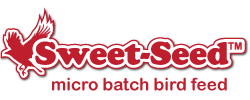Is Sweeter Nectar Dangerous For Hummingbirds

All birders know that hummingbirds have a sweet tooth – even though birds have no teeth – and it can be tempting to offer ever-sweeter nectar in an attempt to attract more hummingbirds and offer them more concentrated energy. Sweeter nectar isn’t always better, however, and it is essential to keep hummingbirds’ best interests in mind when preparing nectar.
Floral Nectar Sweetness
Natural nectar found in flowers is a solution of water and different sugars, primarily glucose, fructose, and sucrose, along with trace minerals and proteins. The concentration of sugar and the exact proportions of different sugars varies in different flowers, and can also be affected by recent rainfall, soil quality, plant health, and the freshness of the nectar.
Studies have shown that hummingbirds typically prefer flowers that offer mostly sucrose, the same type of sugar found in ordinary granulated table sugar. Natural floral nectar that ranges from 20-25 percent sucrose is hummingbirds’ favorite, but the birds will regularly visit flowers that offer up to 30 percent sugar or even slightly higher.
The standard hummingbird sugar water recipe of one part sugar to four parts water yields a solution of roughly 20 percent sugar, most closely mimicking the natural floral nectar concentration hummingbirds prefer. Because the birds will visit a variety of flowers with different sugar concentrations, however, the recipe is a forgiving one and precise measurements aren’t necessary to make hummingbird nectar. If the nectar is slightly less sweet or slightly sweeter than typical, hummingbirds will still enjoy it.
Problems With Sweeter Nectar
While hummingbirds can drink sweeter nectar, sugar water that is too sweet can cause problems both for the birds as well as the birders who offer it. Sweeter nectar, for example, will more easily attract bees and wasps – these insects prefer sweeter solutions – and stinging insects can overwhelm a hummingbird feeder, driving the birds away.
Sweeter nectar may also crystalize more easily, clogging feeder ports. Nectar with higher sugar levels can also ferment more quickly, becoming dangerous to hungry birds.
Nectar with more sugar is more difficult to digest, and it is possible that if hummingbirds are only drinking very sweet nectar, it could cause liver or kidney damage, especially as the birds will be ingesting less water at the same time. These effects have not been thoroughly studied, however, and more research is needed to determine if sweeter nectar can cause lasting health problems for these tiny birds. It is also important to remember that even if one hummingbird feeder offers too-sweet nectar, hummingbirds are also visiting many natural flowers and other food sources, so their diet is more balanced than just what is offered from a single feeder.
When You Can Offer Sweeter Nectar
There are times when slightly sweeter nectar can actually be helpful to hummingbirds. The extra energy offered by a sweeter solution can give migrating hummingbirds an energy boost as they’re traveling. Sweeter nectar can also be useful in cold snaps, when hummingbirds need extra calories to keep warm overnight as temperatures drop. Sweeter nectar will also stay liquid at colder temperatures, ensuring that critical food is available to hungry hummers just when they need it most.
Because hummingbirds will naturally drink nectar that is up to 30 percent sugar, offering slightly sweeter nectar for limited times is not severely detrimental. For the safest hummingbird nectar, birders should offer the sweetest nectar only when necessary, such as early in the morning or late in the evening, while switching out to the classic hummingbird nectar recipe for most of the day. This will give birds a boost early and late, exactly when it will be most helpful but without creating greater risk for these tiny birds.
